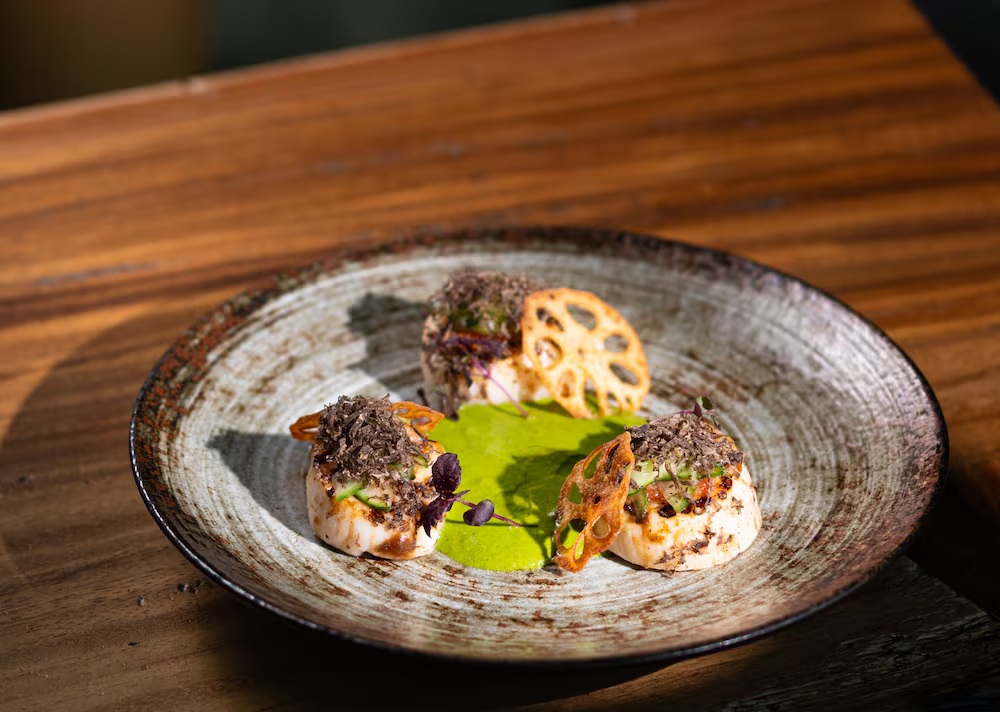
Felicity Cloake
I was lucky enough to be invited to afternoon tea recently – a rare treat indeed – and was surprised to realise that, while the exquisite patisserie caught my eye, the scones had my heart. With no gaudy icing to hide behind, the simple scone stands and falls on its absolute freshness, which is why you can’t beat a homemade one.
Prep 5 min
Mix 10 min
Cook 15-20 min
Makes 12
350g self-raising flour, sifted (see step 1), plus extra for dusting
A pinch of salt
50g butter, softened
50g lard, softened (or use 50g extra butter to keep the scones vegetarian)
100-115ml milk
1 Start the dough
Heat the oven to 200C (180C fan)/390F/gas 6 and lightly grease two baking trays. Put the flour in a large bowl with the salt; if using plain flour, rather than self-raising, reduce the amount to 340g and stir in four and a half teaspoons of baking powder until well combined. (If you’d like sweet scones, stir in three tablespoons of caster sugar, too.)

2 Cut in the butter and lard
Pinch or cut the fats into small pieces; lard will give your scones a lovely lightness without any detectable porky flavour, but can be substituted with an equal weight of butter. (Note: it’s hard to track down on the high street, but free-range and organic lard is available online if, like me, you’d prefer to avoid stuff of mysterious provenance.)
3 Rub in the fat

Run your hands under the cold tap to cool them down, dry them well, then, working as quickly as possible, rub the fats into the flour with your fingertips. Once no large chunks of fat are visible, stop; if you overwork the dough, your scones will be tough and chewy.
4 Incorporate the milk

Still using your hands, mix just enough milk into the bowl to bring the flour and fat together into a smooth, firm dough; it should neither be dry and flaky (if it is, add a touch more milk) or sticky to the touch (add a little more flour). Again, touch the dough only as much as you need to.
5 Roll out and cut the dough

Lightly flour a work surface, then shape the dough into a round and roll it out to a thickness of about 1½cm.

Use a roughly 6cm-diameter cutter (or a similar-sized glass or cup) to stamp out the scones; try not to twist it as you cut – just push straight down into the dough.
6 Bake, cool, eat

Once you’ve used up all the dough (re-shape and re-roll the offcuts), arrange the scones on the greased trays and bake for 15-20 minutes, until well risen and lightly golden all over. Remove and leave to cool slightly, then devour with your choice of topping (salted butter and raspberry jam, please).
7 For fruit scones …
Scatter 100g dried fruit of your choice (sultanas, raisins, currants, obviously, but also morello cherries, or chopped apricots, apples or dates) into the dough along with the milk, and make sure it’s evenly distributed before rolling. You may also like to add a good pinch of a sweet spice such as cinnamon, mixed spice or ginger.

8 For cheese scones …
Add a scant tablespoon of English mustard powder to the flour and reduce the total amount of fat to 70g. Finely grate 175g strong hard cheese into the bowl once you’ve rubbed in the fat – I like mature red leicester for its colour (if using a very strong cheese such as parmesan, though, halve this amount) – along with two tablespoons of finely chopped chives (optional).
9 Or make them bigger
Stir the cheese and chives, if using, into the flour and fat, then mix in 85ml milk, followed by a roughly similar amount of water, adding more gradually until the mix comes together into a dough. Roll and cut as before (or roll out to 2½cm to make fewer, bigger scones), brush with beaten egg and bake until golden.
Courtesy: theguardian
The post How to make sweet or savoury scones – recipe appeared first on The Frontier Post.








